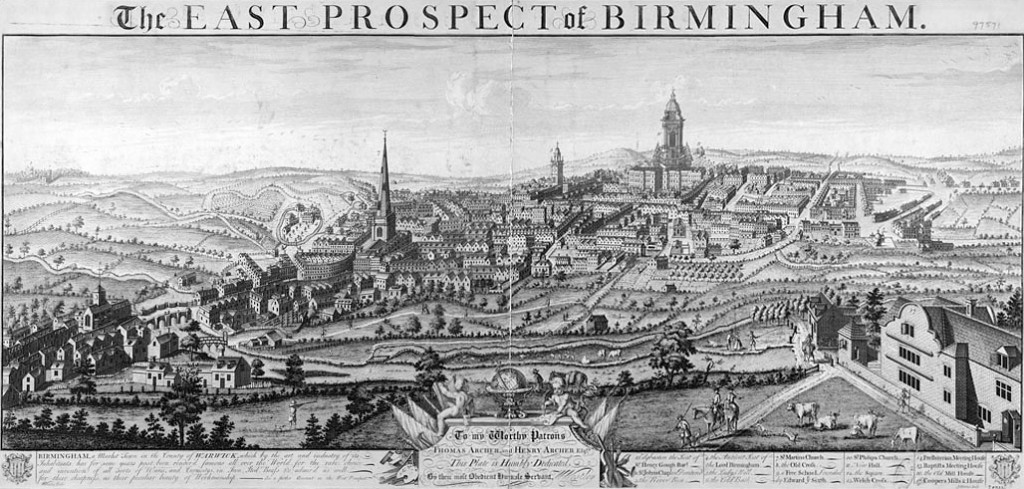Medieval Birmingham
Although currently the second largest city in the United Kingdom, Birmingham started out as a small Saxon village, growing to a town in the 12th century. The town became well-known for the wool industry as it was woven and dyed there. By the end of the 1500s, the town became known for its metalworking and leatherworking industries. By 1500, Birmingham had a population of 1500.
Birmingham in the 16th and 17th centuries
The town grew rapidly in this time, reaching 5000 in 1650. By this time metalworking had somewhat taken over from leather and wool. Birmingham became synonymous with cutlers, nailers and blacksmiths. The town was very close to an iron ore and a coal seam, which offered fuel for forges. The nearby streams slowed watermills to power the forges.
19th century Birmingham
The city’s industry was still dominated by metalworking. The workers still made brass goods, nuts, bolts, buttons and screws, as well as pen nibs and toys. By the end of Victoria’s reign, there was a cocoa and chocolate industry in Bourneville, a place which went on to give its name to a brand.
20th century Birmingham
The city’s university was founded in 1909. By the early 20th century, traditional metalworking industries were still doing well. More modern industries also came to the fore, such as bicycling and tyre making. During the interwar period, nearly 50,000 council houses were built in Birmingham.
For more information about Birmingham’s past, visit our Museums guide.